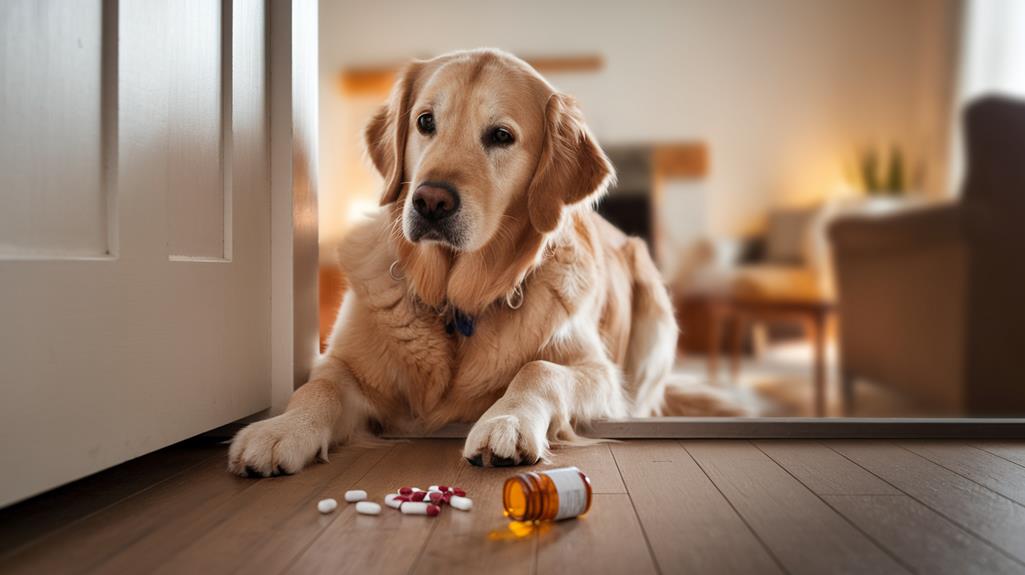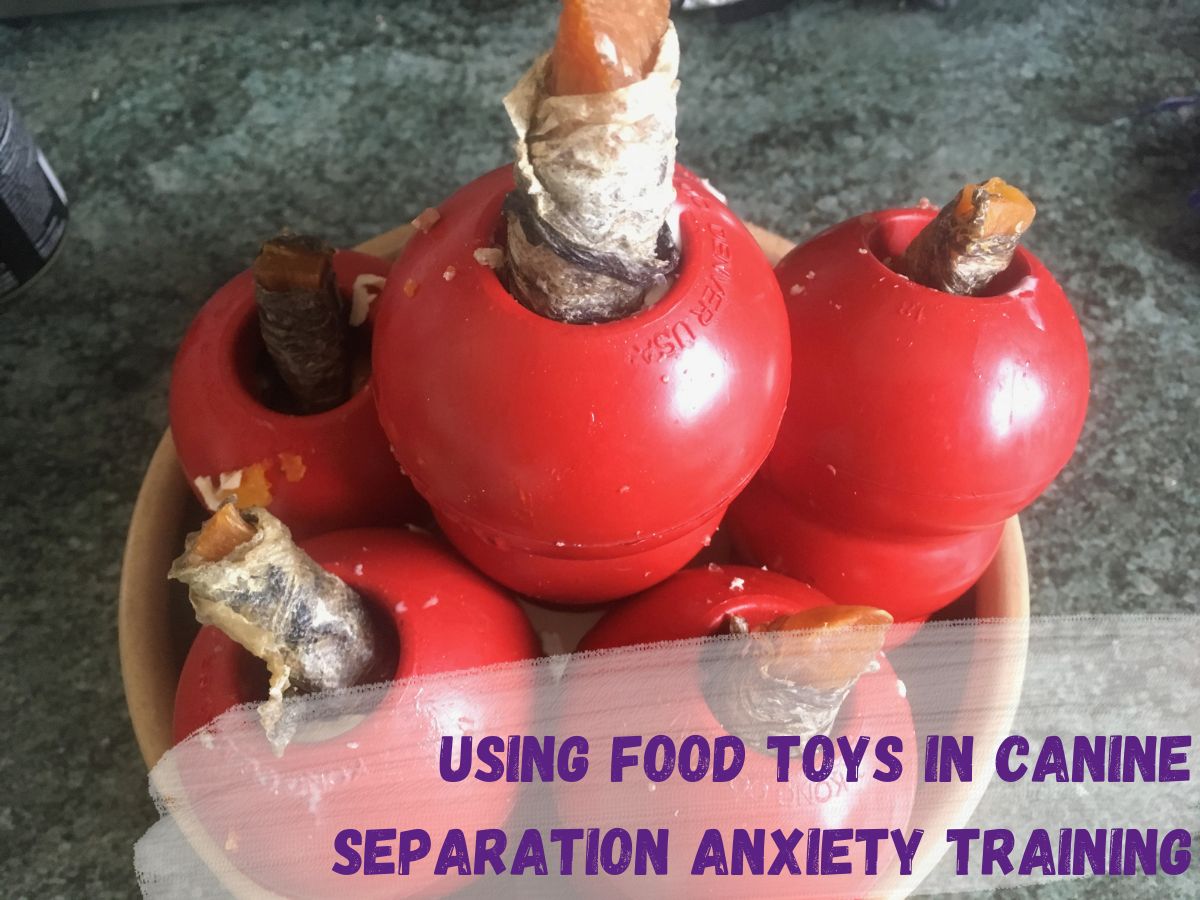If you've ever come home to find your dog has destroyed furniture, barked incessantly, or had accidents inside, you might be dealing with canine separation anxiety. This distressing condition affects about one in five dogs, causing them significant stress when left alone. While it's heartbreaking to see your furry friend suffer, there's hope. Medications can play a crucial role in managing this condition, offering relief for both you and your pet. But with various options available, from FDA-approved drugs to off-label alternatives, how do you know which is right for your dog? Let's explore the world of separation anxiety medications and uncover the keys to helping your canine companion find peace.
Understanding Canine Separation Anxiety
What exactly is canine separation anxiety? It's a complex behavioral condition affecting roughly 20% of dogs, characterized by distress when left alone. Your dog may exhibit destructive behavior, excessive barking, or inappropriate elimination in your absence. This isn't mere mischief; it's a genuine psychological issue.
You'll notice symptoms arise when your dog perceives itself as isolated. This perception triggers intense anxiety, often manifesting as hyperattachment to you. Male dogs, particularly those from shelters or separated early from littermates, are more prone to developing this condition.
Understanding the nuances of separation anxiety is crucial for effective treatment. It's not just about addressing symptoms; it's about tackling the root cause.
Combining behavior modification strategies like desensitization and counterconditioning with FDA-approved medications such as fluoxetine or clomipramine often yields the best results.
Prevention is key. By establishing a stable routine, providing varied experiences, and intervening early, you can significantly reduce the risk of your dog developing separation anxiety.
Types of Anxiety Medications
With a solid understanding of canine separation anxiety, let's explore the various medications available to manage this condition. You'll find two main categories: FDA-approved options and situational medications.
Clomipramine (Clomicalm) and Fluoxetine are the only FDA-approved medications for canine separation anxiety. Clomipramine typically takes 2-4 weeks to show initial effects and up to 8 weeks for full benefits. It may cause sedation and gastrointestinal upset.
Fluoxetine, an SSRI, also requires several weeks to demonstrate improvement. You'll need to monitor your dog's liver function and overall health through blood tests during treatment.
For acute anxiety triggered by specific events, veterinarians may prescribe situational medications like benzodiazepines or trazodone. These provide rapid relief but aren't intended for daily use.
Maintenance medications, on the other hand, are administered daily regardless of your dog's alone time.
In some cases, alternative medications such as gabapentin or buspirone might be considered. However, these aren't typically first-line treatments for separation anxiety.
Always consult your veterinarian to determine the most appropriate medication regimen for your dog's specific needs.
Fda-Approved Vs. Off-Label Options
When considering medication for your dog's separation anxiety, you'll encounter two main categories: FDA-approved options and off-label medications. The FDA has approved only two medications specifically for canine separation anxiety: fluoxetine and clomipramine. These antidepressants work to mitigate symptoms but may take several weeks to show effectiveness.
Off-label medications, such as anxiolytics like alprazolam and trazodone, can offer alternative treatment options. These drugs may provide quicker relief for acute anxiety episodes, making them useful for situational triggers like thunderstorms or fireworks.
However, it's crucial to use off-label medications only under veterinary guidance to ensure proper dosing and safety.
Both FDA-approved and off-label options have their place in treating separation anxiety. While FDA-approved medications offer a long-term approach, off-label drugs can address immediate needs.
Remember, regardless of the medication type, it's essential to combine pharmacological treatment with behavior modification techniques for a comprehensive approach.
Always consult your veterinarian to determine the most appropriate medication strategy for your dog's specific needs, considering factors like severity of symptoms, potential side effects, and overall health.
Short-Term Vs. Long-Term Treatment
Treatment duration is a crucial factor when addressing separation anxiety in dogs. You'll find that medications for this condition fall into two main categories: short-term and long-term options.
Short-term medications, like benzodiazepines, work quickly for specific triggers such as thunderstorms. You'll need to administer these with enough time for them to take effect before the anxiety-inducing event.
Long-term medications, including fluoxetine and clomipramine, require patience. You won't see results for 4-6 weeks, and you should continue treatment for at least two months after achieving the desired response. If your dog's on long-term medication for six months or more, schedule yearly check-ups with your veterinarian.
For comprehensive anxiety management, you might combine short-term and long-term medications. This approach offers flexibility in addressing various anxiety-inducing situations.
Administering Medications to Dogs
Administering medications to dogs with separation anxiety requires careful attention to detail and consistency.
You'll need to follow your veterinarian's instructions precisely, adhering to the prescribed dosage and frequency for optimal results and safety. It's crucial to monitor your dog closely for any side effects after starting a new medication. Common effects may include sedation, decreased appetite, diarrhea, and vomiting.
Schedule regular veterinary check-ups every six months to assess the medication's effectiveness and make necessary adjustments to the treatment plan. Be aware of the specific medication's onset time, as some may take several weeks to show full benefits. This knowledge is essential for managing separation anxiety effectively.
Develop clear and consistent methods for administering oral medications. You might hide pills in treats or use compounded formulations if your dog resists taking them.
Remember that each dog may respond differently to medication, so patience and persistence are key. By combining proper medication administration with behavior modification techniques, you'll give your dog the best chance at overcoming separation anxiety and improving their quality of life.
Common Side Effects
Understanding the common side effects of separation anxiety medications in dogs is crucial for pet owners. As you embark on this treatment journey, you'll need to be vigilant about potential adverse reactions.
Commonly prescribed medications like Clomipramine and Fluoxetine can cause sedation, decreased appetite, diarrhea, and vomiting. While these side effects are typically mild, they can be distressing for both you and your dog.
You should be aware that more serious complications may arise, including increased seizure activity, heart problems, and liver abnormalities. To mitigate these risks, your veterinarian will likely recommend regular blood tests to monitor your dog's health closely.
It's important to note that side effects often manifest during the initial weeks of treatment, and it may take up to eight weeks to see the full benefits of medications like Clomipramine.
Combining Medication With Behavior Modification
While managing side effects is important, it's equally vital to focus on the bigger picture of treating separation anxiety.
You'll find that combining medication with behavior modification is the most effective approach for your dog's condition. By integrating FDA-approved medications like fluoxetine or clomipramine with behavioral therapies, you're setting the stage for enhanced treatment outcomes.
Start the medication regimen before implementing behavior modification strategies. This approach allows your dog to better respond to training techniques, as the medication reduces anxiety levels.
You'll notice that systematic desensitization and counterconditioning exercises become more impactful when your dog's baseline anxiety is lowered.
Monitoring Progress and Adjusting Treatment
Once you've started your dog on medication for separation anxiety, it's crucial to keep tabs on their progress. Regular blood tests are essential: schedule them before starting medication, at 3-4 weeks, and every 6 months thereafter.
These tests help monitor the medication's effects and guide necessary adjustments to the treatment plan.
Keep a close eye on your dog's behavioral changes and any side effects. It's important to understand that long-term medications may take 4-6 weeks to show effectiveness, so maintain a consistent treatment regimen during this period.
Don't be discouraged if you don't see immediate results.
Remember, medication alone isn't enough. Combine it with behavior modification techniques for optimal results.
Continuously assess your dog's progress and be prepared to adjust the treatment plan as needed. Periodic reevaluations of your dog's behavior are crucial for long-term treatment success, ensuring the chosen medication remains effective and appropriate.
Alternative and Complementary Therapies
Have you considered alternative therapies for your dog's separation anxiety? While medication and behavioral training are often the primary treatments, complementary approaches can enhance your dog's overall well-being.
Nutraceuticals like L-theanine offer a non-sedating way to promote relaxation, potentially easing your dog's stress without compromising alertness.
You might also explore pheromone-based products, such as dog appeasing pheromones (DAP). These can create a calming environment, reducing stress-related behaviors when your dog is alone.
Some pet owners have found success with acupuncture and massage therapy, which studies suggest may help alleviate anxiety symptoms.
Don't overlook the power of behavioral enrichment. Puzzle toys and interactive feeders can keep your dog mentally stimulated, combating boredom and anxiety during your absence.
For a more holistic approach, essential oils like lavender and chamomile may offer calming effects. However, use these with caution and only under veterinary guidance to avoid potential toxicity.
Conclusion
You've learned about various medications for canine separation anxiety, from FDA-approved options to off-label choices. Remember, there's no one-size-fits-all solution. You'll need to work closely with your vet to find the right treatment plan for your dog. Combine medication with behavior modification techniques for best results. Don't forget to monitor your pet's progress and be prepared to adjust the approach. With patience and persistence, you can help your furry friend overcome their anxiety.




















